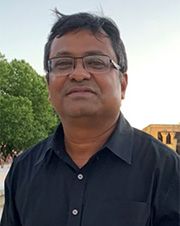Full Wave-field Inversion: Journey towards practical applications
OR
SEG members, view the course for free!
Format: Virtual Webinar. 45 min. presentation followed by 15 min. Q&A
An optional post-lecture workshop will immediately follow each lecture for expanded Q&A and networking
Session 1, Thursday, Oct. 27, 2022, 2 pm to 3 pm US Central Time
Session 2, Tuesday, Dec. 13, 2022, 10 am to 11 am US Central Time
SEG Members Free Access Details
Two live sessions are completed. Please scroll down to watch the videos from the recordings below. SEG members, view the course for free!
Abstract
The vision of extracting the full value from seismic data via full-wavefield inversion (FWI) has been around since the inception of the method in the early 1980’s. Over the past two decades, tremendous progress has been made in addressing FWI’s technical challenges and moving the technology closer to realizing its ultimate vision. Key hallmarks of this technology range from rapidly creating significantly improved velocity models for imaging purposes, to obtaining subsurface physical properties directly from seismic data. In geologically complex areas FWI can capture velocity variations at a scale useful for both imaging and property inversion, beyond what can be done with conventional methods. None of these advances would be possible without significant improvements and investment in computer hardware and algorithms.
This HL talk is a broad overview of FWI technology mostly aimed at non-experts, with the goal of discussing the impactful vision of FWI, its early challenges, advancements in methodologies to solve large scale ill-posed inverse problem with practical insights into integrating FWI with conventional approaches to extract maximum value. The Figure-1 below shows the differences and synergy between conventional seismic data processing and FWI. As expected, the reliability of the results is dependent on the input data, therefore acquisition details are an important consideration for successful application of FWI. Thus, FWI has been a key influence on the advancement of acquisition technology, in particular acquiring long offsets and low frequencies.
The issues associated with FWI are complex and rich. For this talk, I will mostly focus on acoustic physics in an attenuative and anisotropic setting. Addressing these pressing technical challenges requires ideas that are a mix of algorithm innovation, computational advancements, and problem-dependent workflows to move toward the goal of providing high-quality subsurface images at a resolution and scale that provides value to our business. Using examples from exploration and development settings, I will present the value FWI brings to the upstream decision-making process. I will end the talk with a discussion on the choice of physics. In a strongly elastic medium, acoustic physics can fall short in explaining the data and introduce errors in the results. In a future DL talk, I will expand on the elastic aspect of FWI and discuss the opportunity and associated challenges when higher level of physics is introduced.

Figure 1. Comparing Conventional Seismic Processing with Acoustic FWI. Color: Black – wave-fields active in the step for the workflow, grey- wave-fields that are attenuated or mitigated via processing and red- wave-fields challenging to explain using acoustic FW
Your Instructor

Partha Routh obtained his Bachelor’s and Master’s in Geophysics from the Indian Institute of Technology (IIT), Kharagpur, India, and in 2000, his PhD from the University of British Columbia (UBC), Canada with the focus on inverse problems applied to electromagnetics and uncertainty analysis.
After a post-doc at the UBC-Geophysical Inversion Facility, he joined ConocoPhillips Upstream Technology where he conducted research on pre-stack seismic inversion and imaging and potential field applications. In 2002, he joined the geophysics faculty at Boise State University with a research focus in near-surface environmental geophysics and geothermal applications. He received tenure in 2006.
Doctor Routh has been with ExxonMobil for the past 13 years mostly involved with Full Waveform Inversion (FWI) research and applications through a variety of roles mostly in research and exploration. Over the years, he gained valuable experience applying FWI and imaging in various basins in the world. Currently, he is the Elastic FWI Technology Coordinator in ExxonMobil Technology Company. His primary interests are in area of inverse problems, and their application to seismic using wave equation as well time-lapse. He is active in FWI for imaging, reservoir characterization and monitoring. Partha has authored and co-authored more than fifty publications and fifteen patents. He is currently an Associate Editor of GEOPHYSICS and past-chair of SEG Research committee and past-president of SEG near surface society.
